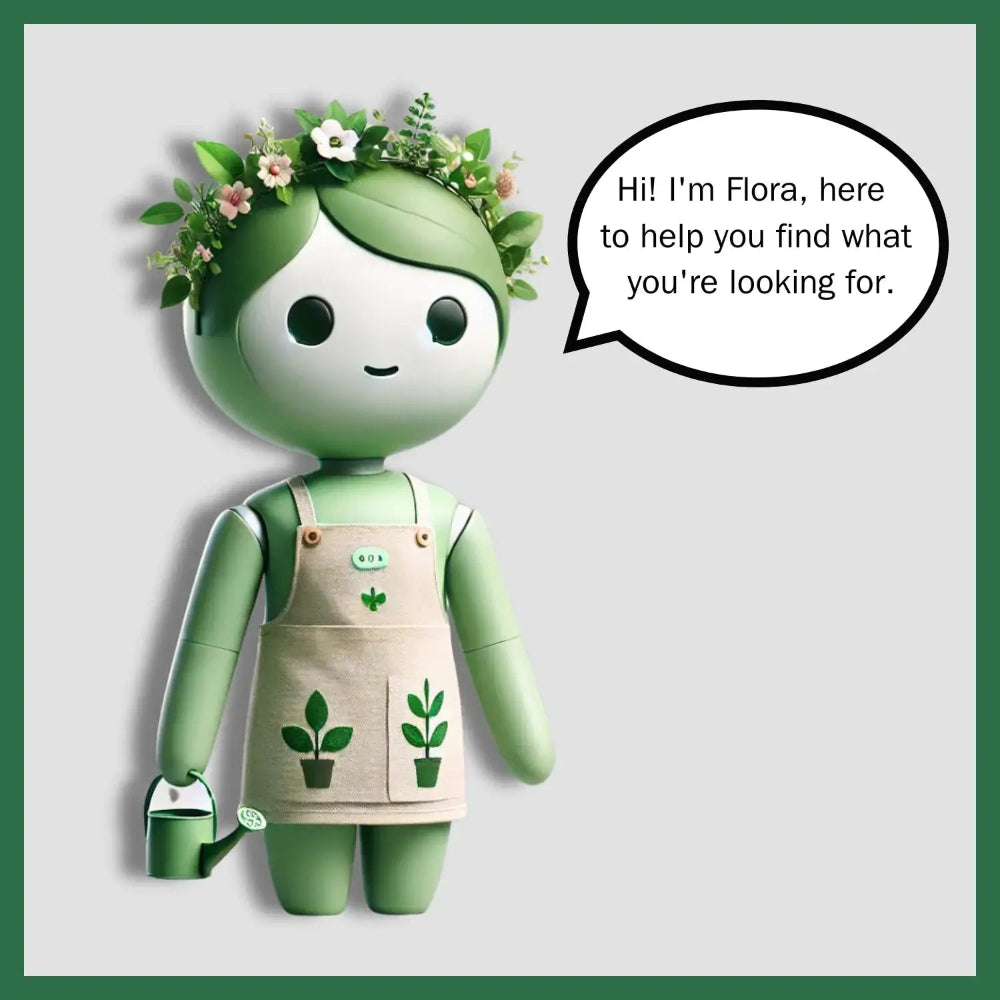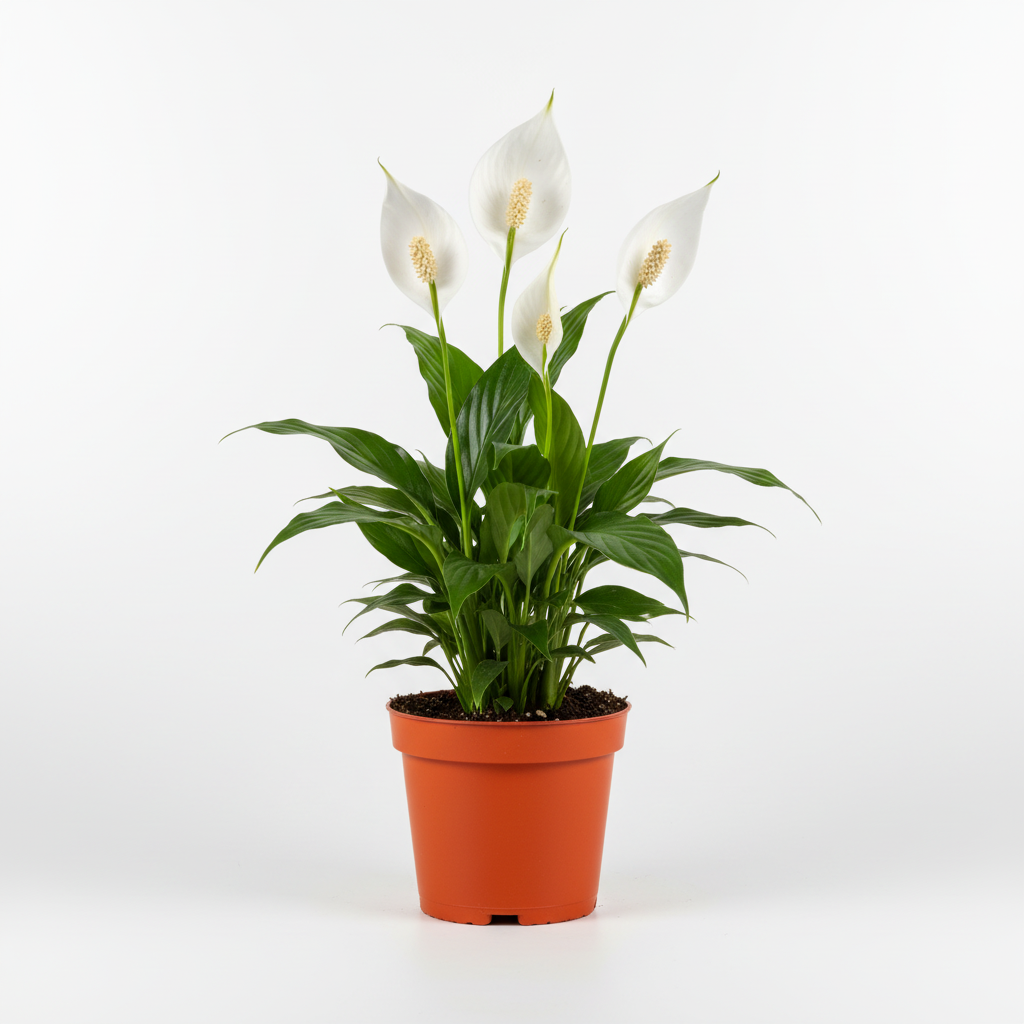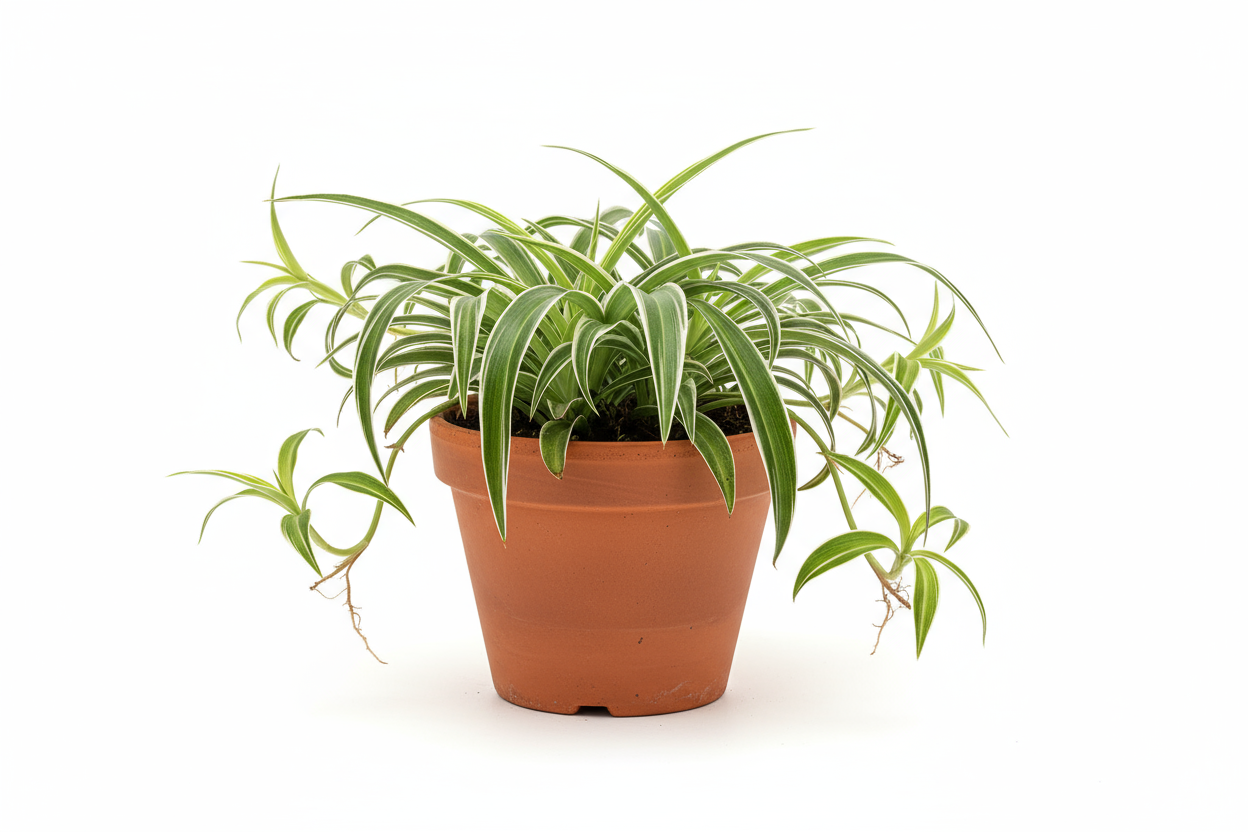Welcome to ‘All About Planties’, where we dive into the beauty of houseplants that transform homes and elevate moods. Today, let’s explore the Spider Plant—a graceful, air-purifying, and pet-friendly companion perfect for any indoor space. 🌱
Meet the Spider Plant (Chlorophytum comosum)
Known for its arching leaves and dangling plantlets (spiderettes), the Spider Plant has a charming way of adding movement and life to your space. Whether you’re a beginner or a plant enthusiast, this low-maintenance plant deserves a spot in your home.
Quick Facts:
- Origin: Native to tropical and southern Africa
- Light Requirements: Bright, indirect light but adaptable to low light
- Key Benefits: Air purification, pet-friendly, low-maintenance
- Popular Varieties: ‘Reverse’, ‘Hawaiian’, and ‘Bonnie’

Why the Spider Plant is a Must-Have for Your Indoor Garden
🌿 Air-Purifying Properties:
Spider Plants are natural air purifiers, capable of filtering harmful toxins such as formaldehyde, xylene, and carbon monoxide. A healthier home starts with cleaner air!
🐾 Pet-Friendly:
Unlike many houseplants that are toxic to cats or dogs, Spider Plants are non-toxic—making them a safe choice for pet-friendly homes.
💧 Low Maintenance:
With minimal watering needs and flexible lighting preferences, even busy plant parents can enjoy the benefits of the Spider Plant without stress.
How to Care for Your Spider Plant (Step-by-Step Guide)
🌞 Light:
- Best: Bright, indirect sunlight for optimal growth
- Tolerates: Low light but avoid direct sunlight, which can cause leaf burn
💧 Water:
- Water when the top inch of soil feels dry
- Tip: Spider Plants are drought-tolerant, so underwatering is better than overwatering
🌡️ Temperature:
- Ideal: 60-75°F (15-24°C)
- Protect from frost and extreme cold
💨 Humidity:
- Benefits from occasional misting in dry environments
- Humidity-loving but not picky
🌱 Soil:
- A well-draining potting mix (blend of soil, perlite, and peat moss)
Propagating the Spider Plant: Expand Your Collection with Ease
One of the joys of having a Spider Plant is its ease of propagation. Here’s how you can multiply your plant effortlessly:
- Identify Spiderettes: Look for the small plantlets hanging from the mother plant.
- Cut the Spiderettes: Gently cut them off, leaving a short stem.
-
Rooting Options:
- Water propagation: Place the spiderettes in a jar of water until roots develop
- Direct soil planting: Plant them directly in soil with a well-draining mix
- Transplant: Once rooted, pot them in individual containers.
Common Issues and Solutions
🟤 Why are the tips of my Spider Plant turning brown?
- Causes: Fluoride in tap water, dry air, or over-fertilization
- Solution: Use filtered water and mist regularly to maintain humidity.
🪴 Why is my Spider Plant not producing spiderettes?
- Spiderettes are more common in plants exposed to bright light and occasional fertilizer during their growing season.
Discover Unique Varieties of Spider Plants at All About Planties 🌱
We offer several stunning varieties to suit different preferences, each with its unique charm:
🌟 Spider Plant ‘Reverse’
- Features white leaves with green margins for a vibrant, elegant touch.
- Perfect for: Adding brightness to darker indoor spaces.
🌴 Spider Plant ‘Hawaiian’
- Compact, subtly variegated, with a tropical flair.
- Best for: Homes or offices with limited space but big design goals.
🌿 Spider Plant ‘Bonnie’
- Known for its curly, playful leaves—adding texture and movement to your indoor garden.
- Fun Fact: It’s just as air-purifying as its traditional counterparts but with a whimsical twist!
FAQs on Spider Plant Care
Q: How often should I water my Spider Plant?
A: Water when the top inch of soil is dry. Overwatering is a common cause of root rot, so it’s better to let the soil dry out slightly.
Q: Can Spider Plants grow in bathrooms?
A: Absolutely! Bathrooms typically have higher humidity levels, which Spider Plants love.
Q: Do I need to prune the spiderettes regularly?
A: Not necessarily. You can let them grow for a cascading effect or trim them off for propagation.
Final Thoughts: A Spider Plant for Every Home 🌿
With its air-purifying benefits, low maintenance needs, and pet-friendly nature, the Spider Plant can be your new go-to indoor plant. Whether you’re a beginner or a seasoned plant lover, this resilient plant will reward you with beauty and clean air.
📢 Take the Plant Quiz: Not sure if the Spider Plant is your perfect match? Take our quiz to discover your ideal houseplant!
Happy planting! 🌱
 Want to bring home a classic air-purifying plant?
Want to bring home a classic air-purifying plant?Our Spider Plant is one of the easiest to care for — perfect for beginners and anyone who loves lush green vibes indoors.
🌿 SHOP THE SPIDER PLANT COLLECTION
Free shipping over $50 · 30-day guarantee










